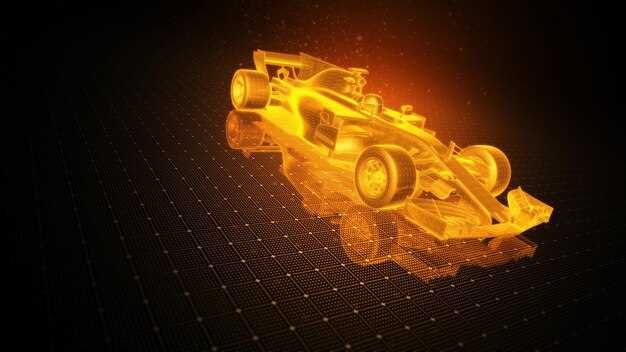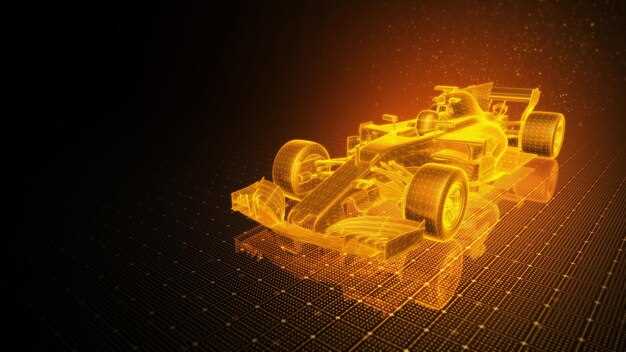
Aerodynamics plays a crucial role in the performance of race cars, influencing both speed and handling on the track. The study of how air interacts with solid objects, aerodynamics focuses on reducing drag and optimizing downforce, two critical factors in achieving peak racing efficiency. By harnessing aerodynamic principles, engineers can design vehicles that not only zip down straightaways but also maneuver expertly through curves, enhancing overall control.
Race car design has evolved significantly, integrating advanced aerodynamic techniques to improve lap times. Elements such as front and rear wings, diffusers, and body shapes are meticulously crafted to create the ideal air flow. These modifications enable cars to gain stability at high speeds, allowing drivers to push their machines to the limit while maintaining safety and precision.
In this article, we will explore the fundamental concepts of aerodynamics that contribute to race car performance. We will delve into the science behind drag reduction and downforce generation, illustrating how these forces shape the design decisions made by engineers and the benefits they offer during competitive racing. Understanding these aerodynamic aspects not only informs better car design but also enhances the viewer’s appreciation of the intricacies involved in the high-stakes world of motorsport.
Streamlining Shapes for Reduced Drag in Race Cars

In the world of aerodynamics, the shape of a race car plays a pivotal role in enhancing its speed and control. Streamlining refers to the design approach where the vehicle’s exterior is optimized to reduce aerodynamic drag, allowing for improved performance on the track.
The primary goal of creating streamlined shapes is to minimize the air resistance that a car encounters as it moves forward. A well-designed aerodynamic profile encourages smooth airflow over the vehicle, avoiding turbulence and maintaining laminar flow. This is critical because turbulence creates drag, which can significantly hinder a race car’s speed.
Common features of streamlined race car designs include a low and wide stance, rounded edges, and a tapered rear. These elements work together to direct airflow efficiently over and around the vehicle. For instance, a tapered rear reduces the wake generated behind the car, which otherwise contributes to drag. The use of underbody diffusers further enhances this effect by creating a low-pressure area under the car, pulling it closer to the track.
Incorporating active aerodynamic components, such as adjustable wings and spoilers, can further optimize drag reduction. These elements can change their position based on speed and driving conditions, allowing race teams to adapt quickly for maximum performance. The balance between downforce and drag is crucial in maintaining optimal speed, stability, and control.
Ultimately, the implementation of streamlined shapes in race car design not only aids in achieving higher velocities but also enhances handling characteristics. By effectively managing airflow, race engineers can ensure that drivers experience better grip and reduced likelihood of losing control during high-speed maneuvers. As technology progresses, the continuous refinement of aerodynamic designs will remain paramount for the success of race cars on the track.
Balancing Downforce and Stability during High-Speed Turns
In the world of racing, a critical aspect of a car’s performance lies in its ability to maneuver effectively during high-speed turns. This involves a precise balance between downforce and stability, both of which are heavily influenced by aerodynamics. Downforce increases the vertical force on the tires, enhancing grip and allowing for faster cornering speeds. However, excessive downforce can lead to instability, making the car harder to control.
Aerodynamic elements, such as wings and diffusers, are designed to generate downforce while minimizing drag. The placement and design of these components are crucial; for instance, a well-positioned front wing can create a balance that allows the car to pivot smoothly during turns. Additionally, the rear wing must complement the front setup, ensuring that the overall aerodynamic profile remains balanced at high speeds.
The challenge in racing lies in fine-tuning these aerodynamic features to meet track conditions and driving styles. Engineers often utilize Computational Fluid Dynamics (CFD) simulations to predict how changes in aerodynamics will affect downforce and stability during race scenarios. Adjusting the angle of attack on wings or altering airflow paths can significantly impact how a car behaves during dynamic maneuvers.
Furthermore, the weight distribution of the car plays a vital role in achieving that balance. A car that is too front-heavy may generate excessive grip at the front wheels, compromising its stability and leading to understeer. Conversely, an overly rear-biased setup can cause oversteer, resulting in loss of control. Therefore, teams meticulously adjust suspension settings and weight distribution to optimize both downforce and stability.
In conclusion, achieving the right balance between downforce and stability during high-speed turns is a fundamental aspect of race car design. Utilizing advanced aerodynamics helps teams gain an edge, ultimately contributing to improved lap times and race performance.
Real-world Testing of Aerodynamic Components in Racing Conditions

In the realm of motorsport, aerodynamics plays a pivotal role in determining a vehicle’s performance on the track. Testing aerodynamic components under actual racing conditions is essential for engineers and teams to ensure maximum race efficiency. Such testing reveals valuable insights that computational fluid dynamics (CFD) simulations often overlook.
During real-world testing, aerodynamic components like wings, diffusers, and bodywork are subjected to the intense dynamics of high-speed racing. This process involves meticulously measuring the downforce and drag produced by these elements, which directly affect lap times and handling characteristics. Data collected in these scenarios helps teams fine-tune their designs to strike a balance between speed and stability.
Various methods are employed to gather data during testing. Many teams utilize trackside telemetry to monitor aerodynamic performance in real-time. This allows engineers to make quick adjustments, ensuring the car remains competitive throughout the race. Additionally, wind tunnel testing is often complemented by on-track evaluations, facilitating a comprehensive understanding of how designs perform under the specific conditions racers face.
Moreover, driver feedback during these tests is invaluable. Drivers provide insights into how aerodynamic changes affect the vehicle’s handling, which is crucial for making informed decisions. Their input can influence the final adjustments to aerodynamic setups before the starting grid is formed.
Ultimately, real-world testing of aerodynamic components is not merely a validation tool; it is a critical component of the development cycle, equipping teams with the knowledge necessary to enhance their aerodynamics and achieve optimal performance in the highly competitive world of race car driving.



